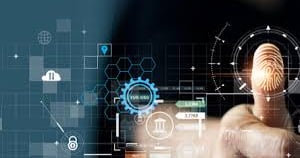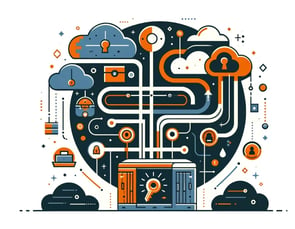Introduction
Controlling who can access your data is crucial in protecting privacy and ensuring security. Without proper access controls, sensitive information is exposed to unauthorized eyes. The key to safeguarding user data is creating systems that ensure only authorized individuals can access specific information. In today’s digital age, this can be achieved through advanced methods like Generative AI.
Abstract
Overview
User data access defines who has permission to view or modify sensitive data within an organization. Implementing proper access controls prevents data breaches, protects privacy, and helps comply with regulations. With AI-driven systems, businesses are able to set precise, dynamic access controls that adapt in real-time based on context, user role, or behavior.
User data access is the first line of defense in data security. Imagine a world where anyone can access your private files—terrifying, right? That's where managing access comes in. In this blog, we explore how smart systems, powered by Generative AI, are reshaping how businesses control who sees what. With the right controls in place, your sensitive information remains private and secure. Let's dive in.


[Disclaimer: This blog post is for informational purposes only and should not be construed as legal or financial advice. Organizations should consult with legal counsel and regulatory authorities to ensure compliance with reporting requirements.]
Mandatory
Controlling user data access is mandatory for every organization to ensure security and compliance. Failure to do so can lead to unauthorized access, data leaks, and even legal penalties.
Applicability
This applies to all industries—especially those handling personal, financial, or classified data. Whether you’re a healthcare provider, financial institution, or tech company, data access must be controlled.
Regulatory or Company Interest?
Regulations such as GDPR, HIPAA, and PCI-DSS require strict access controls to protect personal and financial data, and unauthorized access can lead to hefty fines and legal action.
Key Guidelines
Implement role-based access controls (RBAC)
Ensure the principle of least privilege—only grant access necessary for the task
Review and update permissions regularly
Use AI to monitor access patterns and detect anomalies


Key Implications
Without proper data access controls, sensitive information is vulnerable to breaches. On the flip side, strong controls enhance data privacy, help with compliance, and reduce the risk of insider threats.
Countries with Adoption or Influence
Countries with robust data protection laws, such as the EU, the US, and Canada, have adopted strict guidelines for managing user data access, especially in sectors like healthcare and finance.
International Frameworks Influenced
International frameworks like NIST 800-53 and ISO 27001 highlight the importance of controlling access to sensitive data and recommend advanced controls for managing user access effectively.
Regional and Industry-Specific Frameworks
In regions like the EU, healthcare, and finance, controlling user data access is not just best practice—it's legally required. Frameworks specific to these sectors impose additional security measures.
Secure Your Digital Identity with SecureKnots
Contact us to learn more about our cybersecurity services and ensure your organization meets cybersecurity requirements.


Conclusion
User data access control is critical for maintaining confidentiality and privacy in the digital world. By leveraging AI and following best practices, businesses can effectively manage who has access to what and ensure their data stays safe.
How SecureKnots Can Help?
SecureKnots is your trusted partner in implementing strong authorization and data access controls. Our GRC consulting and internal and external audits ensure your access policies align with regulatory standards. Through VAPT services, we identify vulnerabilities in access controls and help mitigate risks. Our security awareness training educates employees on data access best practices, while ransomware and phishing simulations test how well your access controls stand up against real-world attacks. Trust SecureKnots to ensure your data remains locked tight!
This blog focuses on the importance of securing employee access to internal systems while showcasing how SecureKnots can help organizations strengthen their access controls. It is informative and engaging, highlighting the significance of User Data Access. Let me know if you need further adjustments!
Thank you for your attention! If you have any inquiries about cybersecurity requirements or need expert guidance, please don't hesitate to contact SecureKnots.
This should wrap up the blog and fulfill the promise made in the previous one!
User Data Access-Who Can See What?
Imagine if anyone could peek into your personal files, messages, or data—scary, right? The first step in Authorization is controlling user data access. Generative AI can help create smart systems that ensure only authorized users can access sensitive information. Stay tuned as we explain how AI is helping businesses and individuals protect private data from unauthorized eyes.
WITH OUR SHORT BLOGS
STAY UP TO DATE
Copy Rights @ 2023 SecureKnots. All Rights Reserved.
CONTACT US
Contact@Secureknots.com
USA
+1-302-601-2346
+1-302-608-6708
INDIA
080-31658865
GET IN TOUCH
